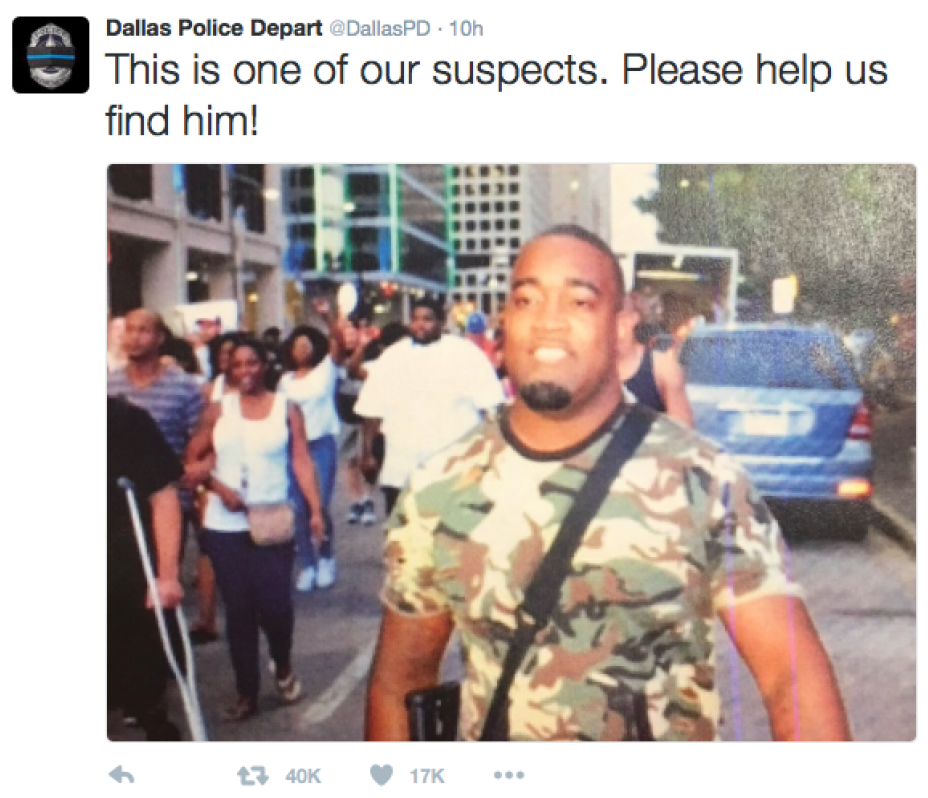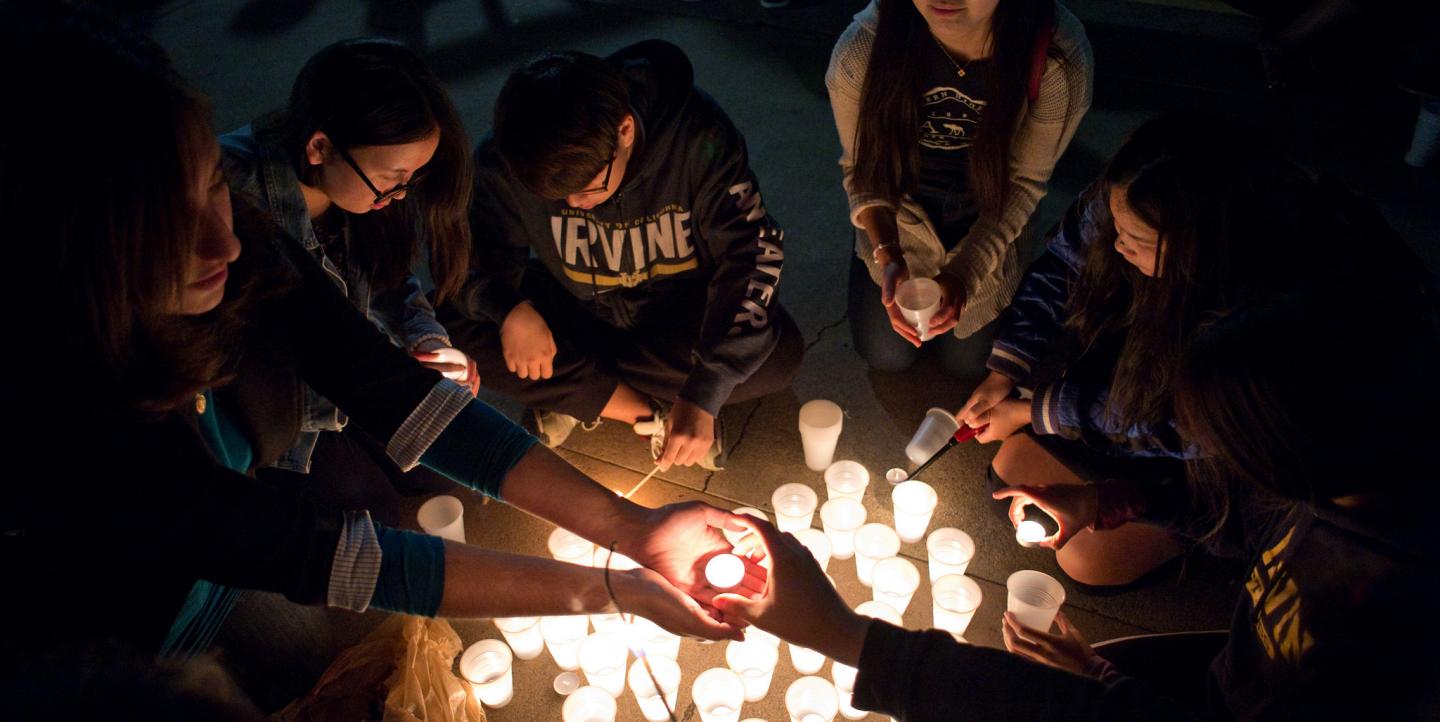Gun violence is an unavoidable problem facing countries around the world. Mass shootings — attacks with multiple victims — may disproportionately plague the U.S., but they take place everywhere from Paris to Pakistan.
In one of the more high-profile recent examples, amid last week’s shootings at a protest against police brutality in Dallas, the Dallas Police Department tweeted a photo of an alleged suspect. “This is one of our suspects. Please help us find him!” the tweet read (see below).
The only problem? The man in the photo, Mark Hughes, was innocent. The brother of Black Lives Matter protest organizer Cory Hughes, Mark Hughes had been peacefully protesting alongside fellow demonstrators when shots rang out.
Yet the police department left the tweet up for 17 hours, during which it was retweeted more than 40,000 times. While many Twitter users and journalists pointed out the tweet’s inaccuracy, Hughes’ lawyer said the two brothers received “thousands of death threats” as a result.
What could have been done better? How can journalists report on this problem while keeping themselves safe, respecting the victims and avoiding other ethical blunders? We gathered several tips and resources from across the web for reporting on this topic:
Use caution in breaking news situations
Every journalist is driven by deadlines. And in a situation like a mass shooting in which news develops at breakneck speed, it can be tempting to repeat reports from fellow news outlets and get a story out as fast as possible. However, this can quickly lead to proliferating potentially harmful untruths, said Bruce Shapiro, executive director of the Dart Center for Journalism and Trauma at the Columbia University Graduate School of Journalism.
“Be careful about rushing out with unconfirmed or early information or social media rumors, which turn out to be inaccurate or which will propagate myths,” Shapiro told Newsweek in October.
The Breaking News Consumer’s Handbook, created by Alex Goldman for NPR's On the Media, offers nine simple guidelines to follow while reporting on developing situations.
 And as last week’s example shows, it’s crucial to think twice before retweeting.
And as last week’s example shows, it’s crucial to think twice before retweeting.
Screen your experts
When seeking outside sources for comment, be wary of self-proclaimed experts who “are just dying to be helpful,” Steven Gorelick, professor of media studies at CUNY’s Hunter College, said in the aftermath of the 2007 Virginia Tech shootings. “Serious experts are almost always quick to admit that there is no easy explanation for why and how something happened, especially before even the most basic information is released.”
It’s a good idea to vet multiple sources and quickly check their qualifications before publishing their quote — Expertise Finder can be a helpful place to start. You can also ask local law enforcement or criminal justice sources to see who they’d recommend. Sources who wish to remain anonymous should be avoided when possible.
Understand the risk of propagating imitators
“To reduce copycats and lionizing, reporters have a special responsibility to portray with precision and accuracy the estrangement of these perpetrators, and to scrupulously avoid language or images that could romanticize their actions,” wrote Shapiro and Dr. Frank Ochberg on the Dart Center website.
Even if mass shootings don’t directly correlate to copycat attacks, many shooters release self-serving statements and manifestos outlining the reasons for their actions. It’s important to use discretion and caution when covering these statements.
When ABC News acquired the gunman’s manifesto from last year’s on-air killings of journalists in Roanoke, Virginia, the outlet chose to only publish excerpts of the text. In another case, last year Mother Jones and a few other outlets published the entire 2,000-word manifesto written by the shooter who killed nine at a church in Charleston, South Carolina.
Some even argue that journalists should avoid naming the shooters altogether as a means of withholding the notoriety they so often seek. This certainly happened in the aftermath of last month’s shooting at Pulse nightclub in Orlando, Florida, with FBI Director James Comey refusing to use the killer’s name.
There’s no clear right or wrong answer when it comes to this issue — just be aware of the consequences of taking either stance.
Other resources
The International Center for Journalists’ Journalism and Trauma manual can help newsrooms understand how to better prevent and deal with traumatic stress among journalists who have covered violent attacks.
Elsewhere, the Dart Center offers numerous resources for journalists on covering mass shootings. You can access tip sheets, articles and more here.
For tips on interviewing victims of trauma, journalists can consult Poynter’s list of best practices for speaking to shooting witnesses and victims.
Main image CC-licensed by Flickr via UCI UC Irvine. Secondary image via Twitter.

